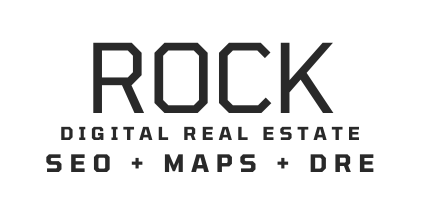Author name
Turbocharge Your Contractor Website in Austin, TX!
As one of the fastest-growing cities in the United States, Austin, Texas, presents unique opportunities for contractors looking to expand their reach and grow their business. With new developments rising in neighborhoods like Mueller, East Riverside, and South Lamar, demand for skilled contractors is booming. Yet with increased opportunity comes increased competition—especially online.
If your contractor business doesn’t appear on the first page of Google or isn’t converting visitors into leads, you’re missing out on high-value jobs. This guide offers advanced strategies in SEO, Google Ads, and website optimization tailored specifically for Austin-based contractors.
Why Digital Marketing Matters for Austin Contractors
Austin’s tech-driven culture and entrepreneurial community demand a digital-first approach. Homeowners and developers increasingly rely on online searches, reviews, and social media to find reputable contractors. A professionally optimized website backed by local SEO and paid advertising can dramatically increase your leads and local reputation.
According to Wikipedia, Austin’s population has grown over 30% in the past decade, driving demand for remodeling, landscaping, roofing, and general construction services. A strong online presence ensures your company is part of that growth.
Local SEO: Get Found Where It Matters
Search Engine Optimization (SEO) is the foundation of long-term online visibility. Local SEO, in particular, is crucial for contractors whose clients are searching for services in specific neighborhoods or zip codes.
Google Business Profile Optimization
Claiming and optimizing your Google Business Profile is essential. This free tool allows your business to appear in local search results and Google Maps. Ensure that your profile includes:
- Accurate business name, address, and phone number
- Service areas and business categories
- High-quality project photos
- Customer reviews with responses
- Weekly posts about new services or promotions
On-Site SEO With Local Intent
Your website should reflect Austin-specific search terms. Pages should include keywords like:
- “Home remodeling in South Congress”
- “Austin roofing contractor near Zilker”
- “Kitchen renovation in Westlake Hills”
Use these in your page titles, meta descriptions, headers, and throughout your content. Consider developing landing pages for high-value areas like Tarrytown, Hyde Park, and Travis Heights.
Local Citations and Backlinks
Make sure your business is listed consistently across top directories like Yelp, Angi (formerly Angie’s List), and Houzz. Inconsistent listings can negatively affect your local rankings.
Securing backlinks from authoritative domains further boosts your credibility. For example, guest contributions or interviews on respected platforms like Moz or LinkedIn can send positive ranking signals to Google and help validate your authority in the field.
Google Ads: Precision Targeting in Austin Neighborhoods
While SEO takes time to build momentum, Google Ads allows you to capture immediate traffic. For contractors, local service ads and search ads are particularly effective.
Smart Geographic Targeting
Use Google Ads’ location targeting tools to narrow your audience to specific zip codes or neighborhoods in Austin. If your specialty is luxury remodeling, prioritize areas like Westlake Hills or Barton Creek.
Create separate ad groups for each service (e.g., kitchen remodeling, deck building, roofing) and tailor the copy with location-specific messaging such as “Trusted Roof Repair in East Austin.”
Maximize Your Ad Spend
- Use call and location extensions to encourage immediate contact.
- A/B test different headlines and calls-to-action.
- Monitor your Quality Score and adjust bids accordingly.
To truly outperform the competition, integrate conversion tracking into your site to measure how many leads your campaigns generate—and at what cost.
Website Optimization: Your 24/7 Sales Team
Think of your website as your digital storefront. It should reflect your workmanship, professionalism, and ability to meet the needs of Austin homeowners.
Highly-responsive and Mobile-Friendly Design
More than 60% of search traffic comes from mobile devices. If your site doesn’t load quickly or display properly on smartphones, you’re losing leads. Use tools like Google’s PageSpeed Insights to test performance and make improvements.
Clear, Actionable Navigation
Include call-to-action buttons like:
- “Get a Free Quote”
- “Book a Consultation”
- “View Past Projects”
Each service page should also highlight relevant Austin work. For example, feature a gallery of a remodeling job completed in the Clarksville Historic District or a patio installation in Allandale.
Trust-Building Content
Create a testimonial page featuring verified reviews from Austin customers. Incorporate trust signals such as:
- Licenses and insurance information
- Local business awards or memberships (e.g., Austin Chamber of Commerce)
- Case studies with before-and-after photos
Build Local Authority in the Austin Market
Community engagement matters to Austinites. Building real-world relationships strengthens your brand and creates opportunities for backlinks, partnerships, and word-of-mouth marketing.
Consider these local references and tactics:
- List your business on AustinTexas.gov, the city’s official site.
- Sponsor local events via Do512, an influential event platform.
- Join the Austin Independent Business Alliance.
- Attend networking events like BASHH (Big Ass Social Happy Hour).
- Partner with Austin-based real estate agents or home stagers.
- Collaborate with interior designers from neighborhoods like Bouldin Creek or Brentwood.
- Create content around seasonal trends—like pre-summer deck installations in Circle C Ranch.
- Host workshops or webinars targeting Austin homeowners.
- Highlight sustainability practices for eco-conscious areas like the Mueller district.
- Use hyperlocal references in blog content and case studies to enhance relevance and connection.
Analyze, Improve, Repeat
Success isn’t static. Use tools like Google Analytics and Google Search Console to monitor traffic, keyword performance, and user behavior. Regularly audit your site for broken links, outdated content, or slow-loading elements.
Conclusion
In a city as vibrant and fast-moving as Austin, contractors must do more than rely on referrals and traditional advertising. A professionally optimized website, a robust SEO strategy, and carefully targeted Google Ads campaigns can significantly increase visibility and drive leads from high-value clients.
By incorporating local knowledge and aligning with Austin's culture, your contracting business can not only compete but become a market leader. Whether you’re a solo remodeler or running a full-scale construction firm, now is the time to invest in your digital footprint and establish a lasting online presence.
If you'd like a custom digital marketing plan tailored for your Austin contractor business, reach out to a local expert or certified Google Ads partner who understands the local market landscape.


